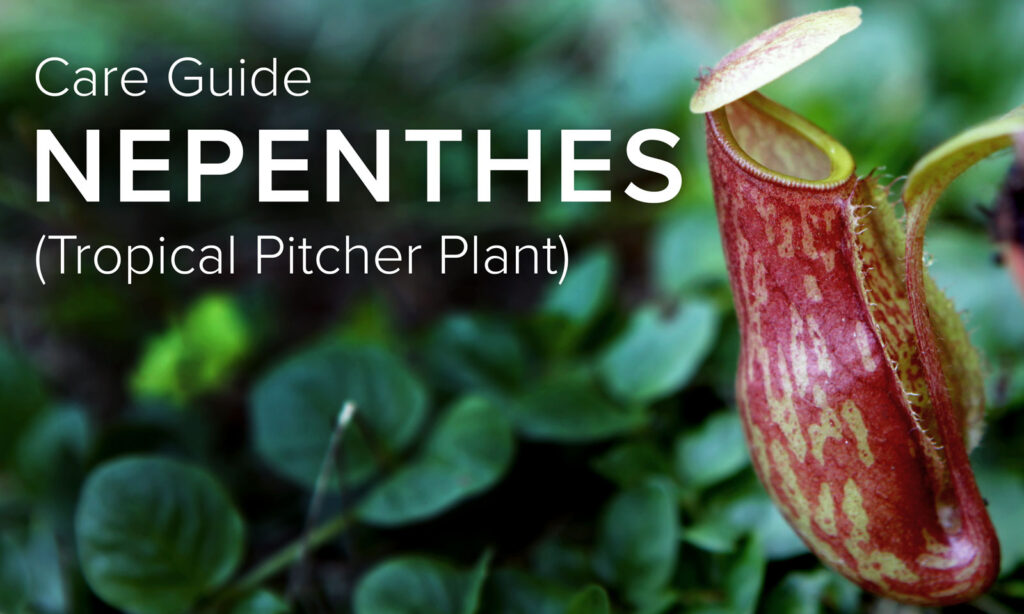
Nepenthes, Monkey Cups, or Tropical Pitcher plants are impressive plants needing humidity and warmth.
They can be divided into two main groups – highland plants and lowland plants, but there is some cross-over where you find the intermediate ones. They produce two types of traps – lower traps formed on lower growth and upper pitchers formed when the plants get larger and start to climb.
The lowland plants usually like temperatures of around 25C, with a slight drop in temperature at night. They are very intolerant of low temperatures (we have lost many to a power cut in the winter!) They also like the humidity of 80% ideally.
These things need to be quite constant, so monitoring is essential. If you don’t have a suitable tropical greenhouse, a terrarium can be an excellent place to grow lowland plants, though they may well outgrow it. All Nepenthes can be pruned if they get too big.
Highland plants like a fluctuation in temperature, particularly between day and night. Ideally, it should be 20C during the day and 15C at night, but some will tolerate temperatures just above freezing at night. Humidity should be no less than 60%. Many highlands will grow well on a windowsill, the back of a conservatory or in a shower room and grow well in a warm greenhouse.
Nepenthes like good light, but not the baking sun. They benefit from artificial lights in the winter as our days are so short. If grown in a greenhouse, 50% shade is needed.
Watering
Do not place in water trays. Instead, water from the top and make sure they stay damp. Mist regularly -at least daily. Misting is very important, as humidity helps trap formation. If the tips of the leaves are drying before they produce traps, they need more humidity. Plants can be placed on gravel trays to increase humidity or grown with other plants to help create a humid microclimate. If they have arrived through the post with empty traps, just put a little rainwater in each open trap. They will produce their own liquid usually.
Feeding
Nepenthes can be fed by putting insects or anything into the trap. Id does not have to be alive. They can also be fertilised with strength orchid foliar feed about twice a month during the summer months. Just spray it on the leaves.
Winter Care
Lowland plants need constant conditions, winter and summer, as far as possible. This can prove quite expensive in the winter. Many highlands will tolerate relatively low temperatures in the winter, but they will sulk. Traps will die back over the winter, starting with the lid, then the whole trap and finally the leaf. Just remove dead parts.
Compost
Nepenthes enjoy an open compost. Use equal parts of peat, perlite, long fibre moss, and fine orchid bark. However, they are very tolerant of soil, so it doesn’t worry if it’s not exact. Seramis can also be used in the mix. Plant in standard pots or orchid baskets. Tall pots allow the traps to hang over. Hanging baskets are an excellent way to display them.
Propagation
Propagate the prunings by trimming to just below a leaf node and dipping in the rooting hormone. Wrap the stem in moss with cling film, and place it in a propagator somewhere warm. There is around a 50:50 chance of the cuttings taking.
